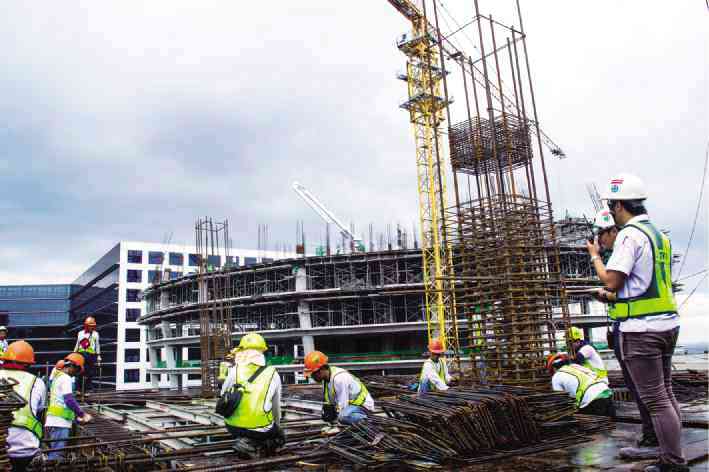
One of the sectors seen to hold growth opportunities for Nordic companies include the construction and infrastructure industry. (File photo from the Philippine Daily Inquirer)
External trade jumped to a double-digit figure in May 2017 partly because of an increase in construction activities in line with the government’s plan to ramp up infrastructure development even as manufacturing slowed that month, according to a report released Tuesday by the Philippine Statistics Authority (PSA).
In the report, the PSA said merchandise exports last May rose by 13.7 percent to $5.489 billion from $4.828 billion a year ago, the sixth straight month of double-digit export growth.
Meanwhile, the value of imported goods that entered the country in May increased by a faster 16.6 percent to $8.242 billion from $7.068 billion last year, reversing the 0.1-percent decline a month ago.
As the value of imports outpaced that of exports, the country’s balance of trade in goods remained at a deficit of $2.753 billion last May, the widest to date.
“The deficit is caused by imports of capital equipment and intermediate goods for production,” Socioeconomic Planning Secretary Ernesto M. Pernia told reporters late Monday. “It’s actually a positive thing when import growth is caused by capital and intermediate goods. In fact, that has been the trend – a bigger part of imports now is accounted for by capital imports.”
Pernia, who heads the state planning agency National Economic and Development Authority (Neda), said he expected the deficit to be sustained until yearend as there would be more capital goods imports to be used as equipment for upcoming major construction projects.
As for the increase in two-way trade in May, Pernia said in a statement Tuesday that “our country’s trade growth is consistent with the global pick-up.”
“We are striding forward with world trade performers and we intend to match this growth with sound macroeconomic policies,” Pernia said, adding that “the government expects Philippine exports to increase by about $100 million annually in the next five years.”
In May alone, total trade rose 15.4 percent year-on-year to $13.7 billion.
That month, the top destination of exports (48.3 percent of the total), as well as the biggest source of imports (46.2 percent), was the East Asian region composed of China, Japan, and South Korea.
As of end-May, total trade grew by 13.9 percent to $63.3 billion as exports climbed by 16.3 percent while imports jumped by 12.3 percent during the first five months.
Meanwhile, manufacturing growth, as measured by the volume of production index, expanded by a slower 5.8 percent last May from a year ago’s 7.4 percent, although faster than April’s 4.3 percent, the PSA’s latest Monthly Integrated Survey of Selected Industries released also on Tuesday showed.
Neda nonetheless attributed the sustained growth in the manufacturing sector in May to “the increase in production of construction- and export-oriented products, [including] basic and fabricated metals, and non-metallic mineral products.”
“Construction products are expected to grow further toward the end of the year, backed by the government’s massive infrastructure development spending,” Pernia said. “These include the continuing implementation of major infrastructure projects such as the NLEx-SLEx Connector Road, Cavite-Laguna Expressway, and PNR North-South Commuter Rail.”
“Manufacturing output is expected to sustain its growth toward the end of the second quarter, driven by buoyant domestic demand and optimistic business outlook,” Pernia added. /atm